All in a Morning’s Accessioning
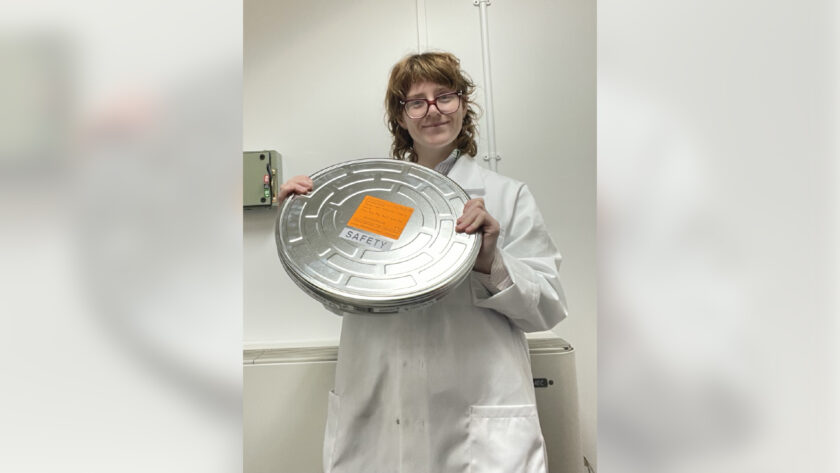
As a Curatorial Archivist with the Collection Development Team at the BFI National Archive, I help acquire new collections. A key part of the acquisition process is accessioning: making the item accessible by adding it to our digital database and labelling its container so it can be located easily.
Awaiting accessioning is a 35mm print of Rouzi Keh Khalam Mariz Bood or The Day My Aunt Was Ill, a short film made in Iran in 1997 by young filmmaker Hana Makhmalbaf. The Makhmalbaf family, many of whom are filmmakers, fled Iran in 2005. They now live in London and hold UK passports. The Day My Aunt was Ill is part of the recently acquired Makhmalbaf family archive. The upcoming BFI Film on Film Festival is screening another film from this collection, A Moment of Innocence (1996), which will be introduced by its director, Hana Makhmalbaf’s father Mohsen Makhmalbaf.
This morning, I am going to accession the The Day My Aunt Was Ill print– join me?
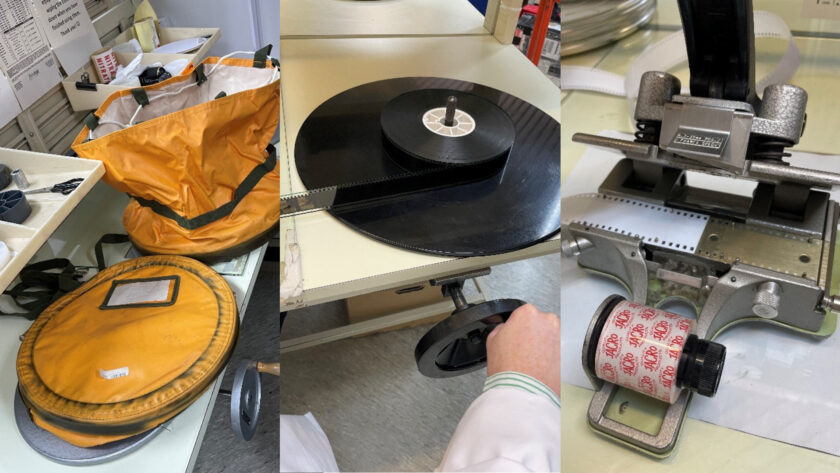
- I remove the film from its original containers. I love its unique orange canvas transport bag!
- I use the winding bench to check the film’s condition and wind the film onto a new archival-standard core. This print is in lovely condition.
- I use this splicer device to add blank leader to the start and end of the film (leader allows you to thread the film onto a viewer without touching the original print).
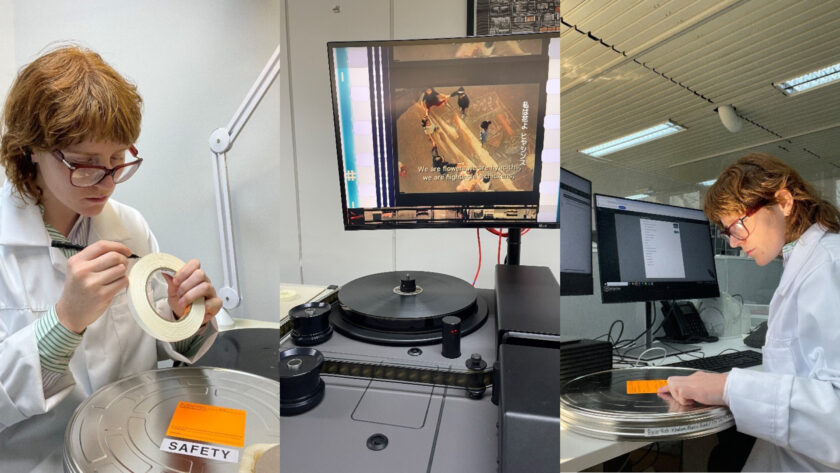
- I rehouse the film in a new, archive-standard can. I label the can with the film title, catalogue item number, donor, accession date, material info (35mm, positive, combined sound, colour), use status, film base (safety), and a barcode for location tracking.
- I view the film on our new sprocket-less inspection scanner. I check there are no major issues with the image or sound and note the footage length of film (this is especially useful if you are comparing two prints, as a discrepancy in footage may indicate a different edit). I also watch the film for cataloguing purposes, including recording names of key credits. I notice this print has Japanese subtitles as well as English subtitles – this will be an important detail to include in the record.
- I create a catalogue record for the film on our database. This multilayered record includes key information about the work (e.g. synopsis, cast and credit list, year and place of production), technical information about this particular print (e.g. gauge, footage length, condition, sound and subtitle info), the donor and the can barcode. You can view this record on the public collection search.
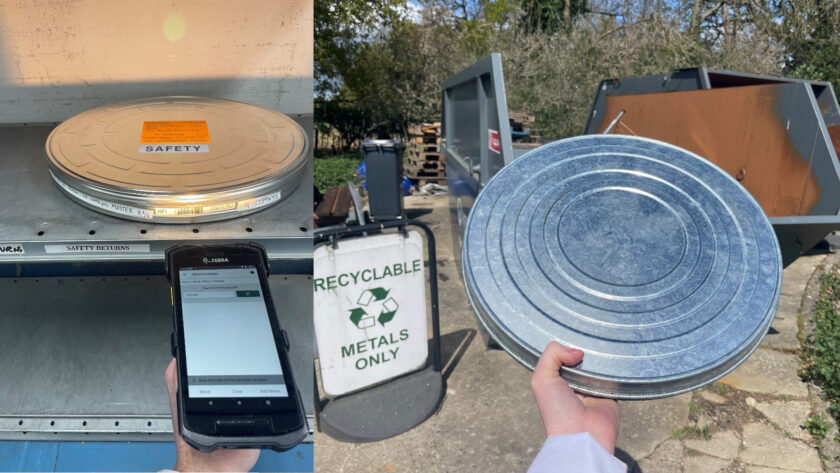
- Now the physical film now has a digital database record and its movements can be tracked, I scan it to the returns shelf. From here, the vaults team will move the film to its long-term home in the master film store vault.
- Last step, tidying up! I take the original film can to the metal recycling (and enjoy the sunshine while I am at it). Must be time for lunch!
– Caitlin Lynch, Curatorial Archivist
Slade in Flame back in cinemas and on BFI Blu-ray
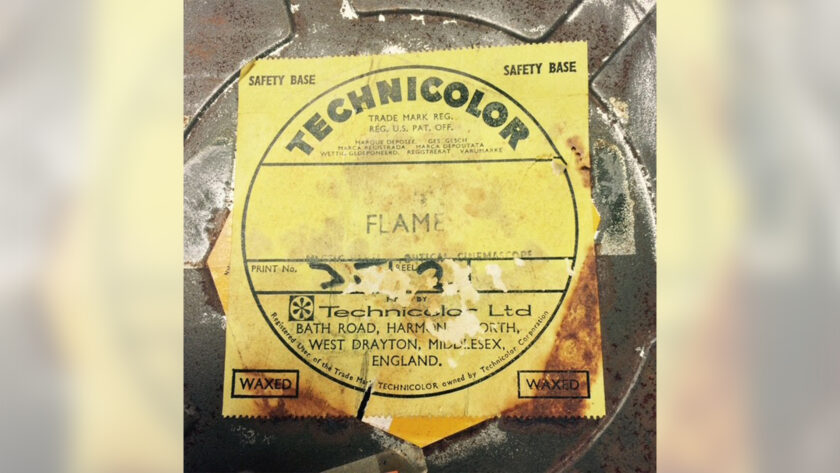
With the remastered re-release of British rock movie classic, Slade in Flame (Dir. Richard Loncraine, 1975), back on screens for it’s 50th anniversary, it seemed like a good time to dig out a photo of some unusual projection instructions that I found taped to a film can when I examined two of the original release prints a few years ago.
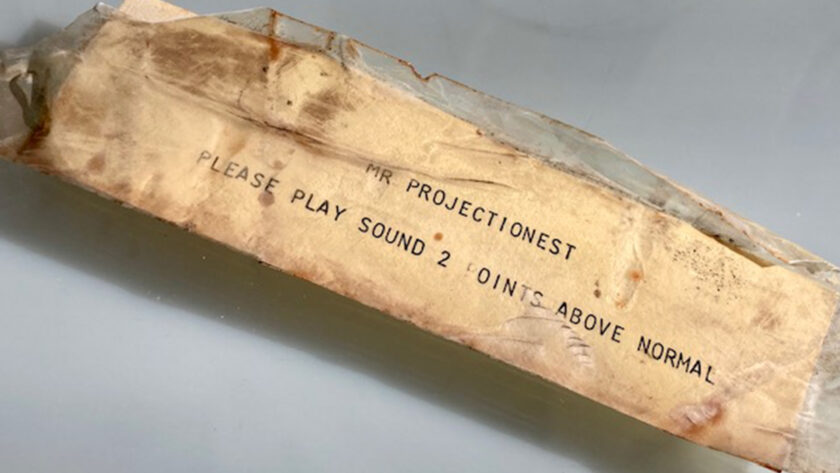
We occasionally find these instructions on or inside film cans that were sent to cinemas if the filmmakers required projectionists to make special adjustments to the sound or picture, beyond what was standard. I love the way that you can almost hear Noddy Holder reading these instructions out in his distinctive vocal style. Clearly they wanted audiences to ‘Feel the Noize’.

Slade in Flame is frequently referred to as “The Citizen Kane of British pop movies” by Mark Kermode, who hosted a lively Q&A with the film’s director Richard Loncraine and stars Tom Conti and Noddy Holder himself, in NFT1 on 1 May 2025, (with fellow band/cast members Dave Hill and Don Powell in attendance in the audience). The film is released in selected cinemas across the country from 2 May and released by BFI on Dual Format Edition DVD and Blu-ray on 19 May. Get Down and Get With It!
– Claire West, Senior Conservator (Film Operations)
The Inside the Archive blog is supported by the BFI Screen Heritage Fund, awarding National Lottery funding.
